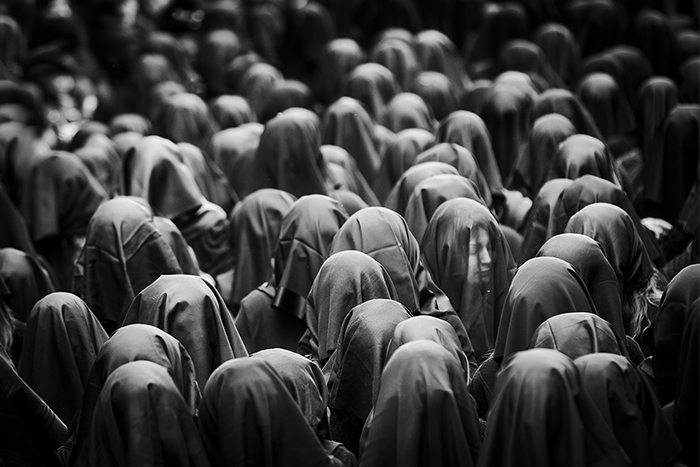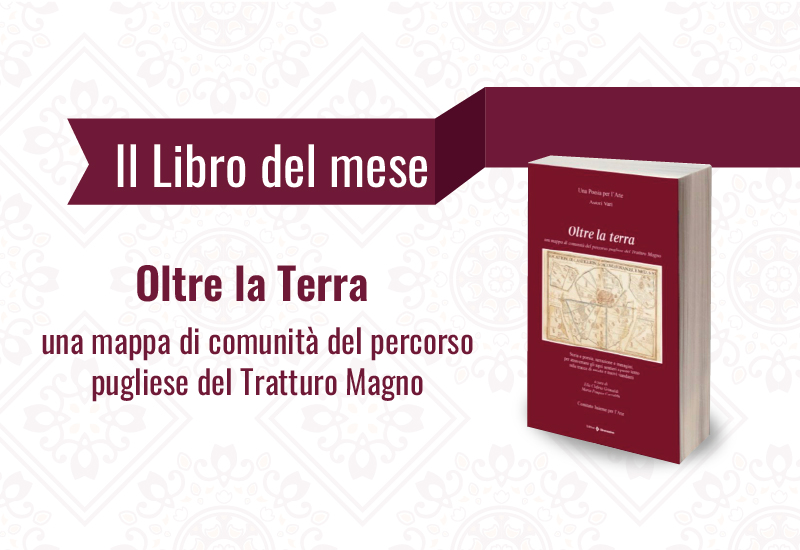A TALE BETWEEN HISTORY AND LEGEND
An itinerary through the vestiges of an illustrious political-military past and the evidence of religious devotion, both of which are the matrices of artistic masterpieces such as castles and Romanesque cathedrals,
with a recommendable diversions to Castel del Monte, the enigmatic and fascinating manor built by Emperor Frederick II of Swabia, which towers over the lonely landscape of the Murge.
The relic of the 'Sacra Spina' in ANDRIA troduces to the processional rites of Good Friday and Holy Saturday in CORATO to the last 'Meeting' between Jesus and his Mother in BISCEGLIE to the heartbreaking chants of the women dressed in black in CANOSA DI PUGLIA.
We descend towards the south of Apulia to immerse ourselves in an area where, between the hills and the sea, the narrative of an illustrious past is enclosed in buildings, castles and churches of inestimable beauty
We retrace the steps of illustrious men who have made history not only in Apulia, such as the emblematic figure of Emperor Frederick II of Swabia, to whom is linked the construction of Castel del Monte, which towers over the lonely landscape of the Murge with its singular octagonal plan on whose corners are grafted towers of the same shape.
At the foot of the castle stands ANDRIA, famous for its great dairy tradition with the typical mozzarella cheese that you absolutely must taste. Here, the rituals associated with Easter begin on the first Friday of Lent with the procession of the Holy Thorn of Christ's crown on which, according to historiography, the imprinted blood stains become vivid as the dates of the Annunciation (25 March) and Good Friday coincide.
On this day, the evocative procession of the Mysteries of Sorrows, valuable wooden statues, takes place, together with the Holy Thorn escorted in honour by knights and ladies of the Equestrian Order of the Holy Sepulchre. Behind them, the faithful gather in prayer and the so-called 'cruciferous' who carry heavy penitential crosses.
After a tour through olive groves, vineyards, almond orchards and old farms in a rural landscape populated by man's work, where dry stone walls replace hedges, we reach the gentle slopes of the Murgia hinterland where the 'pagliari' stand out in their picturesque simplicity.
In the land of wheat and oil is CORATO, located close to the Alta Murgia National Park; here the flavours of the land give life to unique and unforgettable dishes. In a historical centre lit only by the dim light of the candles placed on all the balconies and cornices, on Good Friday the long procession of the Mysteries winds its way through the streets, announced by the shrill sound of the 'troccola' carried by the younger brothers and followed by the black banner. The exit of the nine statues from the church of San Giuseppe is accompanied by the poignant notes of Gioacchino Rossini's 'Stabat Mater'.
We head towards the Adriatic Sea in the tourist city of BISCEGLIE, also known as the 'City of Dolmens', due to the presence of the one known as 'La Chianca', but also a Norman city with a marked culinary tradition with its characteristic sweets, the 'sospiri', clouds of sponge cake filled with light cream that seem to melt in your mouth.
Good Friday is a highly anticipated event for the whole community, the highlight of the whole of Bisceglie Holy Week.
In Piazza Vittorio Emanuele, exactly in front of the Calvary monument, the 'Meeting' takes place between the simulacrum of Jesus carrying the cross and that of Our Lady of Sorrows: the mother approaches her son for a last fleeting kiss, a moment of strong pathos and emotion, the silence of those present remaining breathless.
The traditional ritual then dictates that the two statues continue their journey, always separate and in opposite directions, also visiting the so-called sepulchres in some of the city's churches, like the many faithful.
The journey through Holy Week in imperial Apulia cannot fail to touch on CANOSA DI PUGLIA, a Daunian, then Roman city, the oldest of the ten cities in the Province of Barletta-Andria-Trani, rich in inexhaustible archaeological treasure troves and with the intense flavours of peasant and Mediterranean culture, where traditional dishes based on eggs and lamb, as well as panzerotti stuffed with ricotta cheese, can be savoured.
The most characteristic and unmissable rite of Holy Week in Canosa is the ancient procession of the 'Desolata' on Holy Saturday.
The streets of the town are traversed by numerous children dressed as angels bearing the signs of the Passion of Christ and preceding the statue of the Desolata flanked by poles with flowers and followed by numerous women dressed in black with their faces covered.
This is one of the most evocative and spine-chilling scenes of the entire Apulian tradition: women dressed in black, without faces or identities, who sing and shout in heartbreaking tones a particular version of Jacopone da Todi's Stabat Mater, participating in unison in the sorrow of the Desolate.
photo by Gaetano Armenio, Michele Sorrentino, Michele Albore, Antonio D'Agostino, Elisa Colasanto
Corato, Holy Saturday procession
Andria, the falcon in the Alta Murgia Park
Bisceglie, Good Friday procession of the Encounter
Bisceglie, Good Friday procession of the Mysteries
Bisceglie, the statue of the dead Christ leaves the cathedral on Good Friday
The symbols of the Brotherhoods
Andria, the tasty and typical mozzarella
Bisceglie, the processional rites of Holy Week in the historic
Corato, the Good Friday Procession of the Mysteries
Bisceglie, the dolmen la chianca
Bisceglie, Good Friday procession of the Encounter
Andria. the splendid Frederick castle Castel del Monte
Canosa di Puglia, Holy Saturday procession with the singing of the Desolata
Andria, Good Friday procession of the Mysteries
Canosa di Puglia, Holy Saturday procession with the singing of the Desolata
Corato, Good Friday procession of the Mysteries
Canosa di Puglia, the splendid National Archaeological Museum
Corato, funeral marches during processional rites
Andria, Good Friday confraternal procession
Bisceglie, the characteristic narrow streets of the historic centre
Bisceglie, the waterfront with the tower
Holy Week in Apulia
Bisceglie, Cathedral Basilica of St. Peter Apostle
Andria, procession of the Holy Thorn
Andria, Good Friday procession of the Mysteries
Bisceglie, the olive harvest
Bisceglie, the tasty desserts of sighs
Bisceglie, the tasty Apulian taralli with fennel seed
Mastrototaro Food, the tasty tomato puree, visit our online shop
Mastrototaro Food, the tasty and flavoursome preserves visit our online shop
Buy products from Pugliautentica, visit our online shop




